Designer Blog 6-Postmortem
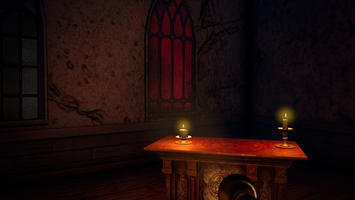
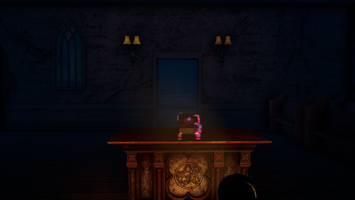
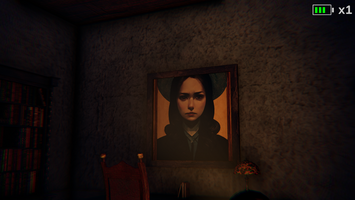
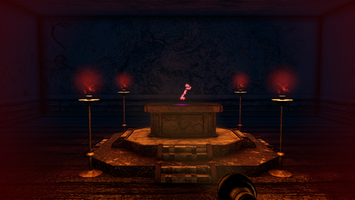

Lead Designer Blog PostMortem
Hey everyone,
Cody Philbrook here to talk about the final build of Menacing Mansion, the design work I completed, and the overall experience of leading my amazing team through the development of our game. If you are curious about the production portion of our game please read my producer Justin Amian’s blog here. Now that the final build is up, I have a lot to talk about. When you design a game there are a lot of different aspects that you have to consider from art, animation, level design, programming, sound design, setting, story, and more. All these different aspects of design come together to create something truly amazing.
First up the art, As I have mentioned before I am primarily a 3D artist. I really enjoy high graphical games to the point that a game's graphics can turn me off of a game. Due to my passion for great looking games I wanted my game to look great as well. I started this project by requiring my team to create 3D models with a polycount of 5000 or less. This allowed them to create intricate and complex models that looked realistic and within the theme of the Edwardian era. When a model was completed they were able to UV and move on to the texturing process. Throughout this process I helped guide my artists by giving them reference, critiquing their work, assisting in problem solving and celebrating their success.
One of the main goals of Menacing Mansion was to create a horror game that made players want to play it over and over. In order to achieve this I wanted to make sure that there was enough variation in the rooms that no 2 rooms looked the same. I tasked the 3D modelers with creating different texture versions of their props. This meant that each props would actually equate to 3 props increasing our assets while only slightly increasing the amount of work necessary in its creation through texturing. We were successful in making the many rooms in Menacing mansion look different but this did create an issue that we did not think of early in the development process that I will get into later in the design post.
Second up is animation. When I was first designing Menacing Mansion, I wanted to give the player something to do as they explored the many different rooms and corridors of the mansion. After researching horror games I began to see a theme of rummaging through drawers, cabinets and cupboards. While this feature was cut because of scope we were able to get the animations for these objects as well as the models being created in a way for this feature to be implemented.
Third up is level design. The different rooms in the maze required 5 variations. A fourplex, corner, straight thru, deadend, and t pose as well as a hallway variation of each. This led to some very creative levels for our designers. Adding the hallway variations later in the production process was an important decision and I feel like it really added a lot to the game in terms of breaking up all the different room types and giving the player the ability to orient themselves as they progress forward through the game
Fourth up is Programming. Menacing Mansion is a really complex game. We were able to implement a few triggered scares. The picture swap, peeper, mannequins, and whisperer. Without divulging too much from the game these spooks were successful in getting jump reactions from the player and really helped create that spooky atmosphere we were aiming for. Throughout the production we designed the bones of our game allowing us to quickly make systems.
Next up the reflection, What went wrong? At the start of development I wanted the game to be high resolution with realistic looking props. In addition to that I wanted the game to have a lot of variation in it. To achieve this I tasked my team with creating 3 variations of the props textures meaning that each props was worth 3. While this did work in creating more variation in the rooms, it did create the problem of way too many materials. Each prop had 3 materials multiply that by all the different props and we had 100s. This meant that the file size of our game started to increase exponentially.
Toward the end of our production we realized that our repository had reached the limit of its file size. As the textures continued to increase, so did the project folder. Eventually our repo no longer had any space and we had to find alternatives to continue to work on the project. This led to a multitude of issues but we were able to overcome them by communicating with each other and ensuring that we weren’t working on the same things as another person.
Using a procedurally generated path meant that everything was instantiated after run time so we were unable to bake the lighting into the scene. For the same reason we were unable to create Nav meshes which caused issues with implementing an AI system so that we could have roaming enemies throughout the game. Due to scope we were unable to test a few solutions that we came up with but in short because each maze generated a specific seed we could implement a scene transition into the game taking the player out of the maze into a room that could then have baking for both the Nav mesh and lighting.
So what went right? At the beginning of the project we set out to create a suspenseful atmosphere and to scare the player. We were successful in creating that suspenseful atmosphere for the player to traverse through our level design and scare event. Having our 3D modelers follow the pipeline of model, UV, texture meant that we got models completed early in our development. Completed models were quickly added to the project and were seen in sequential builds. This meant that when a rooms list of props were completed the entire room set was added to the level generation. Additionally, adding hallways assists in breaking up the types of rooms and belonging the player orient themselves, marking the path that they have taken. Lastly designing our game for 495 ensured that we were able to create a full game loop regardless of our velocity. The game was easily able to expand and contract based on how much work was getting done throughout the semester.
So what would we do differently? What would we do again? Instead of having 3 materials per object we will give each object 1 material still requiring the 3 different textured versions, This would allow us to lower the amount of materials making implementation and organization easier as well as reducing the file size of our game. If I was starting this project over I would do the pre-production again. Menacing Mansions production started long before the fall semester. I created an extensive GDD to document my ideas and give them a central location to be used as reference. Additionally, having high standards for art and the models in the game meant that our assets looked amazing. Lastly, communication and staying in contact with team members, conducting meetings with leads and discussing production and scope throughout the entire project ensured that we were able to meet deadlines and create the best game possible.
We learned a lot throughout this project from repository limitations, animation pipeline, the benefit of an extensive game design document and how challenging it is to get playtesters to play a horror game. Regardless of the bumps along the path we were able to create an amazing game that I know that our player will enjoy. I look forward to seeing what is in the future for Menacing Mansion and Outer games Entertainment. Thank you for taking an interest in our development.
Files
Get Menacing Mansion
Menacing Mansion
Horror
More posts
- Production Blog 6 - PostmortemDec 08, 2022
- Production Blog 5 - Menacing MansionNov 10, 2022
- Designer Blog 5- Menacing MansionNov 10, 2022
- Production Blog 4 - Menacing MansionOct 27, 2022
- Designer Blog 4- Menacing MansionOct 27, 2022
- Production Blog 3 - Menacing MansionOct 13, 2022
- Designer Blog 3- Menacing MansionOct 13, 2022
- Production Blog 2 - Menacing MansionSep 29, 2022
- Designer Blog 2- Menacing MansionSep 29, 2022
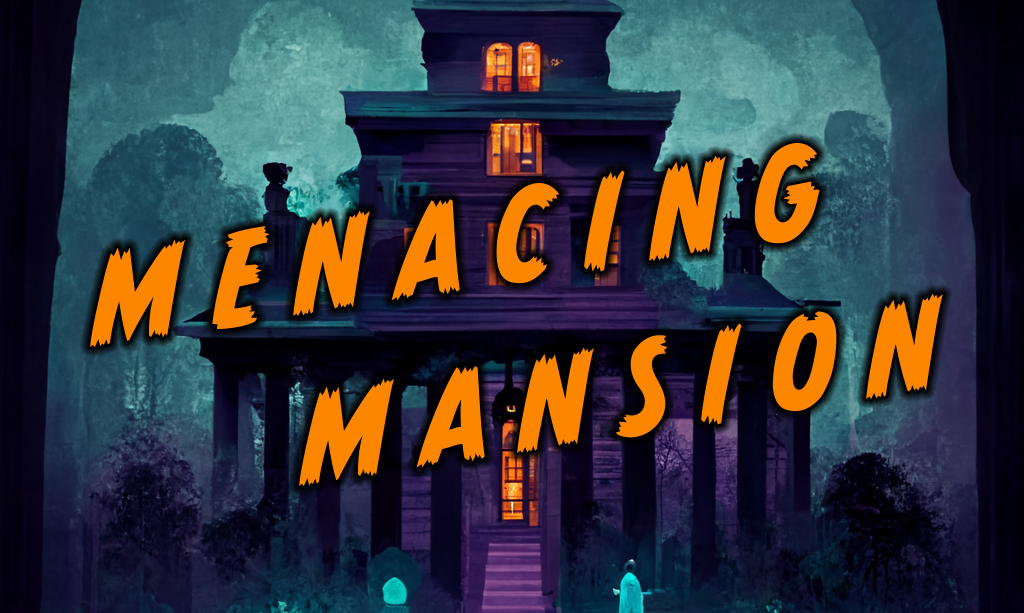
Leave a comment
Log in with itch.io to leave a comment.